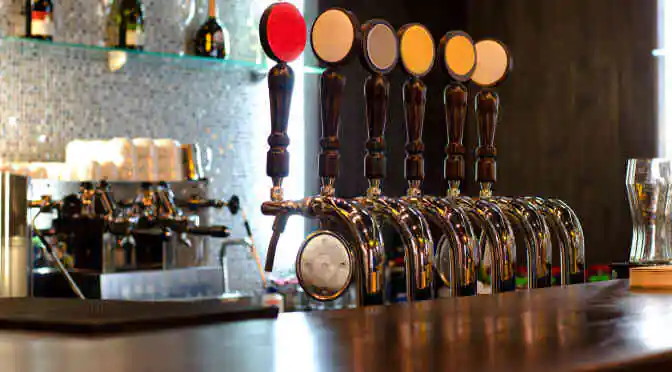With a steady CAGR of around 4 percent predicted for the next few years, the alcoholic beverages industry has come to a strategic crossroads. On one hand, the industry is predicted to witness an increase in the sale of liquors like beer, wine, bourbon, and Tennessee and rye whiskey in several regions globally. But on the other, challenges like the rising costs of raw ingredients such as wheat, barley, and hops may prove to be a hindrance to the implementation of a viable growth plan.
With a confluence of challenges impacting the growth prospects of alcoholic drinks manufacturers, it has become imperative for companies to understand the volatile patterns evolving within the alcoholic beverages market and align their strategic decisions appropriately. There is no question that some of the challenges the industry is facing could significantly impact the profits of mid-scale manufacturers. This would require both international and regional industry players to amplify efficiency across business function.
Gain Competitive Advantage. Buy a detailed market research report on the alcoholic beverages market
Manufacturing Opportunities for Sustainable Growth
In addition to a relentless battle to bridge the demand-supply gap, alcoholic beverage manufacturers are also facing the heat of multiple players competing for the same spot. Over the last decade, the alcoholic drinks market has become highly fragmented with players competing to gain superiority in both regional and global markets.
The fact that economy of scale has not been a successful approach for vendors in winning market superiority has opened a wide space for innovation across the value chain. Market analysts have identified a drastic growth in the consumption of premium liquors across demographics as vendors capitalize on this opportunity.
According to one of our senior industry experts, “The mere presence of popular brands in the market has increased the demand for premium-quality alcoholic beverages. This call for premiumization across all categories will drive the prospects for market growth.”
Another approach used to surpass the current alcoholic drinks industry growth rate is to cater to niche market segments. Niche segments are providing a better growth opportunity for alcoholic beverages companies. For instance, the packaged pumpkin craft beer market is expected to grow at a higher rate than the alcoholic beverage industry. Further, with the market being moderately fragmented there is more opportunity for beer companies to establish market dominance.
To understand how the packaged pumpkin craft beer market is helping vendors increase profits, Download a Sample Report
Trends to Watch – Top 3 trends defining the alcoholic beverages industry
The alcoholic beverages industry is predicted to show an incremental growth of 15.16 billion liters by volume until 2021. This increase in production will cater to the rising demand for alcoholic beverages across the globe. With inflating demands and diversifying demographics, we can ascertain that the upcoming market trends will prove pivotal in determining the direction of growth for the alcoholic drinks market.
Preference of ‘low-calorie’ alcohol drinks
As people become more concerned with leading healthier lifestyles, alcoholic drinks companies are also aligning with the changing trends. Consumers are now more responsive to the amount of calories in a drink while choosing a product. This has compelled both large and mid-scale companies to present the consumer with healthier options when compared to traditional drinks. Companies like Budweiser, Millers, and Anheuser-Busch InBev are coming up with their versions of low-calorie alcoholic beverages like the Budweiser Select 55, the Miller 64, and the Anheuser-Busch Light Pale Lager.
Innovative packaging
Market analysts at Technavio have observed that the packaging of a drink has a direct correlation with consumer opinion of the product. This consumer behavior was primarily noted in the US. Alcohol drinkers in the US prefer to buy products that offer them information on the nutritional value of the beverage and give them an idea of the ingredients. With the rise of millennials adopting alcohol, on-the-go consumption has become exponentially popular in the US. This trend has augmented the demand for packaging of drinks in cans, PET bottles, and tetra-packs.
To understand the growth pattern of the Alcohol Beverages Market in the US, click on the below link
https://www.technavio.com/report/alcohol-beverages-market-in-us-2017-2021
Low-alcohol beverages – An unexpected costumer behavior
The idea that alcohol is not entirely beneficial to the human body has hit the alcoholic drinks market significantly. Consumers are much more cautious of what they are drinking. Also, alcoholic beverages with high caloric values are not a popular choice among customers who are looking to lead a healthy lifestyle. This has given rise to a new trend: the low-alcohol drink. Identifying this rise in demand, alcoholic drinks manufacturers like Anheuser-Busch InBev, Carlsberg, Constellation Brands, and Bacardi Limited have exploited the opportunity to the fullest
To get more insights on the low-alcoholic beverages market, click on the link below
https://www.technavio.com/report/global-low-alcohol-beverages-market-2017-2021
With the competition increasing exponentially and the market becoming more saturated by the day, the alcohol industry will have to pave its own way to a brighter future. It will be crucial for industry stakeholders to understand the consumers at a much deeper level and be responsive to their highly volatile demand.



